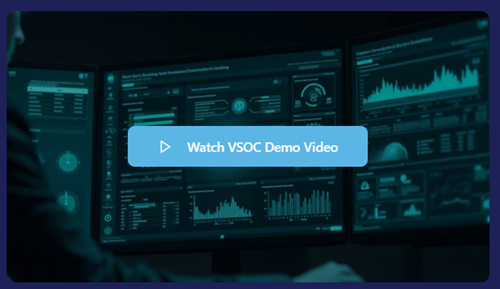
/
September 12, 2024
/
#
Min Read
The Art of the Vehicle Data War: HUMS
Every six months the US Army’s 200,000 or so vehicles underwent a service, regardless of the actual usage – according to Task & Purpose. Some of these vehicles may have driven 5,000+ miles, others only 1,000, some not even 1, but all received a full tune-up, including but not limited to oil changes, new engine filters, and various replacement parts.
While regular maintenance is vital to ensure performance at expected standards, there is a more reliable way to determine when and what needs to be serviced. Embedded health and usage monitoring systems (HUMS) that utilize full-vehicle data logging provide an accurate picture of vehicle health and maintenance needs. What exactly are HUMS and what are the benefits in a military context? Read on to find out.
Preventative Maintenance: An Outdated Approach
Let’s start by taking a look at what the US Military has been doing to improve processes and procedures up to this point. In a two-year study conducted jointly by AMSAA and other divisions of the US Army, the standard preventive maintenance intervals and the potential impact of extending those intervals were examined. The experiment also leveraged condition-based maintenance monitors, which were manually installed on 91 vehicles and 91 trailers. Each week the data from these devices was downloaded and used to assess the vehicles’ conditions. It’s important to note that without this information, many of the faults would have gone unnoticed.
Possibly as a result of this study, in 2023, the US Army launched a plan to make slight adjustments to their vehicle maintenance schedules. The new approach focuses on usage-based maintenance vs interval-based maintenance, which will save time, manpower, and money. However, it is still largely dependent on guesswork. For example, a defense vehicle driven hard over rough terrain may require maintenance sooner than a vehicle driven the same distance but with caution and on smooth highways. Additionally, the installation of additional hardware to track a vehicle’s state of health is also a bit unreasonable, given the number of vehicles that would require the devices and the chances of it being lost, stolen, or damaged in the field.
Embedded Health and Usage Monitoring Systems (HUMS)
Embedded health and usage monitoring systems are advanced diagnostic tools designed to monitor the condition and performance of vehicles. HUMS can come in different forms. For example, hardware-based HUMS require the installation of additional hardware, such as in the military study discussed above. Whereas software-based HUMS, the type we will be focusing on, can be integrated into the existing vehicle architectures without additional hardware. HUMS primarily focuses on critical systems and components to ensure operational safety and efficiency, which is particularly valuable in contexts where equipment reliability and readiness are paramount, such as in defense vehicles.
Predictive Maintenance: A Step Forward in Innovation
HUMS allows fleet managers to continuously monitor key parameters, as well as to perform remote diagnostics on critical systems. What does this mean? It means that instead of manually assessing parts or scheduling vehicles for an in-person data download, fleet managers can monitor and assess vehicles remotely, bringing them in for maintenance only when maintenance is actually needed.
Since maintenance is performed based on actual wear and tear rather than predetermined time or distance-based schedules, fleet managers can save more on parts and labor. This reduction in unnecessary maintenance is not only beneficial from a financial standpoint, but it also helps extend the life of the vehicle and its components. Moreover, the extensive data gathered by HUMS yields deep insights into fleet performance and reliability trends. These insights are invaluable for informing future vehicle design and development, and can ultimately lead to the creation of more robust and capable military vehicles.
Prognostics and Diagnostics
HUMS also allows military personnel to remotely identify potential faults and failures before they develop into major problems. By collecting, monitoring, and analyzing vehicle data, commanders can perform advanced prognostics that allow them to pre-emptively detect and mitigate failures. This not only reduces the risk of unexpected breakdowns but also optimizes maintenance tasks and minimizes downtime.
What about when an issue has already happened? That’s where remote diagnostic commands come into play. Instead of manually inspecting and assessing the vehicle, fleet managers can push a button that executes a remote diagnostic of the unit in question – or units if the fault appears to be widespread. This HUMS-enabled feature is key for troubleshooting and resolving vehicle issues quickly and efficiently.
Enhanced Safety and Operational Efficiency
The continuous monitoring of critical vehicle components via HUMS also helps prevent accidents and faults that could lead to mission failures or casualties. The data collected from HUMS can be analyzed to facilitate informed decision-making in everything from vehicle deployment to service schedules. Commanders can use real-time insights to look at unit health and performance history to choose the most suitable vehicles for specific missions, thereby improving operational effectiveness.
HUMS and Artificial Intelligence
While the military is already actively deploying autonomous vehicles in certain situations, artificial intelligence (AI) also plays a crucial role in HUMS. AI-driven predictive analytics can streamline the analysis of data collected from vehicle sensors and electronic control units, and expedite the identification of patterns and anomalies.
Challenges of Implementing HUMS
Although the benefits of health and usage monitoring systems (HUMS) are notable, deploying them in military contexts presents several technical and logistical challenges. One of the primary technical obstacles is the integration of HUMS with existing military vehicle platforms, which often involves complex modifications to incorporate modern sensors and data processing units into older or varied types of military hardware. Additionally, the harsh and varied environments in which military vehicles operate require that HUMS be highly robust and able to function reliably under extreme conditions such as high temperatures, dust, and vibration, which can be challenging from an engineering perspective.
Logistically, the scale of deployment can be vast, and ensuring consistent installation and maintenance standards across all units can be difficult. There's also the need for training personnel to interpret HUMS data effectively and make informed maintenance decisions based on that data. Another logistical challenge is the secure handling and transmission of the collected data, including stringent security measures to protect sensitive information, and establishing secure communication networks for transmitting HUMS data without risking interception or corruption.
Gaining a Strategic Advantage
Sibros embedded solutions are a type of HUMS that greatly enhances the capabilities of military vehicle fleets. The Deep Logger product is an advanced edge data logging solution designed to capture, decode, and transmit vehicle data from any sensor or electronic control unit to a secure cloud portal for real-time analytics, visualization, and fleet management. By enabling codeless and dynamic logging deployments, Deep Logger allows military operators to collect new data based on specific events or conditions without the need for redeploying logger software. This flexibility is crucial in rapidly changing military environments where real-time data and responsiveness are vital for operational success.
Additionally, Sibros’ Deep Insights leverages AI to provide comprehensive, real-time analytics derived from complex vehicle data, enabling a new level of operational intelligence. This platform not only facilitates enhanced vehicle performance monitoring and predictive maintenance but also offers intuitive, interactive search capabilities that allow users to explore data insights without requiring deep technical knowledge. For applications, where decisions must be both rapid and data-driven, Deep Insights ensures that military personnel have a holistic view of fleet health and operational readiness, to make informed, data-driven decisions.
Given the potential consequences of data tampering or loss, Sibros Deep Connected Platform utilizes advanced communication protocols that ensure data on the vehicle, in transit, and in storage is encrypted and authenticated, thereby mitigating risks associated with unauthorized access and data breaches. Furthermore, the platform's multi-cloud readiness enhances its robustness, allowing seamless operation across different geographic locations and operating conditions, which allows military vehicles to communicate effectively with command centers, regardless of their deployment environment. To further bolster data integrity, the platform employs role-based access control (RBAC) and multi-step authorization to ensure that only authorized personnel can access or modify critical data. These security measures are designed to protect against both external attacks and internal vulnerabilities, ensuring that sensitive military data remains confidential and intact throughout its lifecycle.
Sibros’s suite of connected vehicle products are hardware-agnostic and designed to integrate seamlessly with various vehicle architectures. Get your HUMS up and running in as little as four weeks and start analyzing and reacting to vehicle health and performance issues in real time. To learn more about how Sibros can give you a strategic advantage, schedule a demo today.










